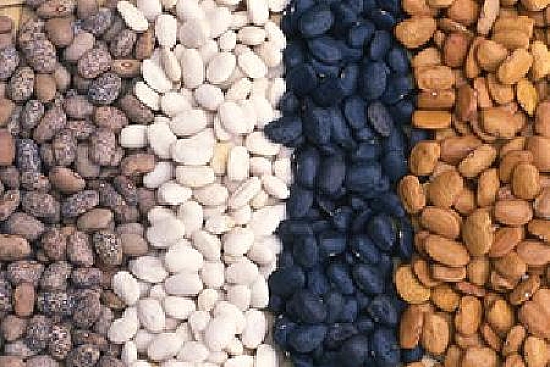
Note: I've received quite a few compliments about this blog post. It was written and published without a single edit by Sarah Jones. Sarah is currently a nutrition student and Arizona State University and has been interning with me over this academic year. The attention to detail you see here is just how Sarah does things. I'm very lucky to have her, and glad she has shared such a timely topic in such a wonderful post. Thanks, Sarah!
You may have noticed that vitamin D has been a hot topic in the media lately and, at this point, it is likely that we as consumers are becoming overwhelmed by all the media hype. Recent studies have suggested that in prehistoric times, in addition to normal skeletal development, humans probably used vitamin D as a natural form of sunscreen. Before majoring in Dietetics, my basic knowledge of the role vitamin D played in the body is that it somehow worked with calcium to promote healthy bones. As it turns out, I had no idea how complex the relationship actually was between vitamin D and the human body! Let’s take a further look at vitamin D. Most of us may know vitamin D as the “sunshine vitamin.” We get it from the sun, right? Sure, but how? When ultraviolet light from the sun shines on a cholesterol compound in our skin, it is transformed into a vitamin D “precursor” (compounds that can be converted into active vitamins that the body can use) and is absorbed directly into the blood. The liver and kidneys finish converting the precursor to the active form of vitamin D. There are two major forms of vitamin D; these are vitamin D2 (ergocalciferol), which is present in plants, and vitamin D3 (cholecalciferol), which is present in the skin of animals. Vitamin D was discovered in 1920 and was originally classified as a vitamin. However, it has since been revealed that vitamin D is actually a hormone (steroid) since it can be synthesized by the body when exposed to sunlight. Essentially, the major biologic function of vitamin D is to maintain normal blood levels of calcium and phosphorus in our bodies, which aids in the absorption of calcium and helps to form and maintain strong bones. Vitamin D3 is the most active form of the vitamin, which is what you will see in most supplements. Obtaining vitamin D from sunlight presents no risk of vitamin D toxicity because the body is able to regulate the vitamin D precursor – see what I mean about complex! But, as we know, getting too much sun puts us at risk for skin cancer. Since moving to Arizona, I have started wearing sunscreen everyday to decrease my risk of skin cancer, but sunscreen can reduce or prevent the synthesis of vitamin D. And, because vitamin D is one of the most toxic of all the vitamins, taking supplements can put us at risk for toxicity. Now you may be thinking, I wear sunscreen, I am concerned about supplementing without first consulting my doctor, and I live in an area that does not get much sunlight during this time of year, what foods can I eat that have vitamin D in them? As far as foods are concerned, dietary vitamin D is provided primarily by foods of animal origin, especially liver, beef and eggs (mainly the yolk). You can also find vitamin D in dairy products such as milk, cheese and butter. Lastly, vitamin D is in some saltwater fish, including tuna, salmon, herring and sardines. Because few foods naturally have substantial vitamin D content, i n the United States there are pre-selected foods, such as milk, cheese, margarine and yogurt as well as some orange juice, bread, and cereals that have been fortified with vitamin D. If you are a vegetarian, you likely will not be obtaining vitamin D by eating liver, beef or fish, but you may still be eating eggs and dairy products. I mentioned yogurt as a source of vitamin D, but after a trip to the grocery store and looking at no less than ten brands of yogurt, I was stumped! I was hard pressed to find yogurts that have been fortified with vitamin D. However, it was not a complete loss, as I eventually spotted one (which also happens to be one of my favorite brands). Stonyfield Organic Yogurt has fortified most of their yogurt products with vitamin D3. Here is a list from their labels of the “percent of daily values based on a 2,000 calorie diet”: Organic Fat Free Smooth and Creamy 6 oz (all flavors): 20% of D3 Organic Fat Free Fruit on the Bottom 6 oz (all flavors): 15% of D3 Organic Low Fat Smooth and Creamy 6 oz (all flavors): 20% of D3 Organic Low Fat Fruit on the Bottom 6 oz (all flavors): 15% of D3 Their soy and Greek yogurt’s do not have vitamin D, but they also make six and ten ounce organic smoothies that contain vitamin D. Additionally, they have two other products that are worth mentioning: “B-Healthy and B-Well.” B-Healthy includes omega-3 fatty acids, as well as three of the B vitamins ( B3 or Niacin, B5 or Panthothenic Acid and B12). B-Well contains vitamin B6, probiotic cultures and vitamin D. According to their website, if you live in the Phoenix area, Stonyfield Organic Yogurt can be found at: Bashas’, AJ’s Fine Foods and Sprouts Farmers Market.































